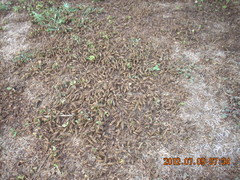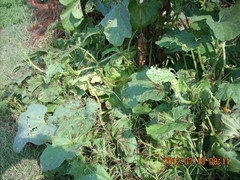organic grasshopper control
markyd
12 years ago
Featured Answer
Comments (23)
chickencoupe
12 years agolast modified: 9 years agoRelated Professionals
Allen Landscape Architects & Landscape Designers · McKinney Landscape Contractors · Waterbury Landscape Contractors · Bridgeview Landscape Contractors · Brooklyn Park Landscape Contractors · Garland Landscape Contractors · Lake Saint Louis Landscape Contractors · North Haven Landscape Contractors · Crowley Landscape Contractors · Albemarle Decks, Patios & Outdoor Enclosures · Lewisville Decks, Patios & Outdoor Enclosures · Medford Decks, Patios & Outdoor Enclosures · Meridian Decks, Patios & Outdoor Enclosures · Northbrook Decks, Patios & Outdoor Enclosures · Spanaway Decks, Patios & Outdoor EnclosuresOkiedawn OK Zone 7
12 years agolast modified: 9 years agoscottokla
12 years agolast modified: 9 years agomarkyd
12 years agolast modified: 9 years agoOkiedawn OK Zone 7
12 years agolast modified: 9 years agolisakeel1
12 years agolast modified: 9 years agoverdant_lady
11 years agolast modified: 9 years agoMacmex
11 years agolast modified: 9 years agoOkiedawn OK Zone 7
11 years agolast modified: 9 years agoslowpoke_gardener
11 years agolast modified: 9 years agofarmgardener
11 years agolast modified: 9 years agoslowpoke_gardener
11 years agolast modified: 9 years agoslowpoke_gardener
11 years agolast modified: 9 years agoMacmex
11 years agolast modified: 9 years agoOkiedawn OK Zone 7
11 years agolast modified: 9 years agoslowpoke_gardener
11 years agolast modified: 9 years agoOkiedawn OK Zone 7
11 years agolast modified: 9 years agoslowpoke_gardener
11 years agolast modified: 9 years agohelenh
11 years agolast modified: 9 years agoOkiedawn OK Zone 7
11 years agolast modified: 9 years agoslowpoke_gardener
11 years agolast modified: 9 years agoJ Chaknova
2 years ago
Related Stories

STUDIOS AND WORKSHOPSGet Your Craft Paper Under Control
A stash here, a roll there, and you can never find it when you need it? These tips for craft paper storage and organization can help
Full Story
KIDS’ SPACESControl Kid Stuff the Sane Way — Artwork-Managing Strategies
Enlist your child's help in managing creative piles to set the stage for good habits and make organizing easier on you
Full Story
HOME TECHNew TV Remote Controls Promise to Do More — Without the Struggle
Dim your lights, set up user profiles and discover a remote you can't lose. Welcome to the latest and greatest way to change the channel
Full Story
ORGANIZINGOrganizing Secrets: It’s the Little Things
Get these 8 small areas under control for a major boost in overall tidiness at home
Full Story
GARDENING GUIDESOrganic Matters: Thwart Insect Pests With Trap Crops
Add a few sacrificial plants to your garden to lure insects away from the harvest
Full Story
ORGANIZINGGuest Picks: Storage and Styling for a Child's Bookcase
A kid's bookshelf can do more than hold books. Use those shelves to keep clutter under control
Full Story
SHOP HOUZZShop Houzz: Closet Storage Essentials
Control the closet chaos with baskets, organizers, racks and other storage solutions
Full Story0

DECORATING GUIDES8 Great Solutions for Magazine Storage
Magazines can get out of control in a hurry. Try these creative ways to keep them tidy and organized
Full Story
KITCHEN DESIGN8 Kitchen Organizing Ideas for Messy Cooks
Not the clean-as-you-go type? Not to worry. These strategies will help keep your kitchen looking tidy no matter what your cooking style is
Full Story
ORGANIZINGYour Total Home Organizing and Decluttering Guide
Take it slow or be a speed demon — this room-by-room approach to organizing and storage will get your home in shape no matter how you roll
Full StoryMore Discussions








Okiedawn OK Zone 7